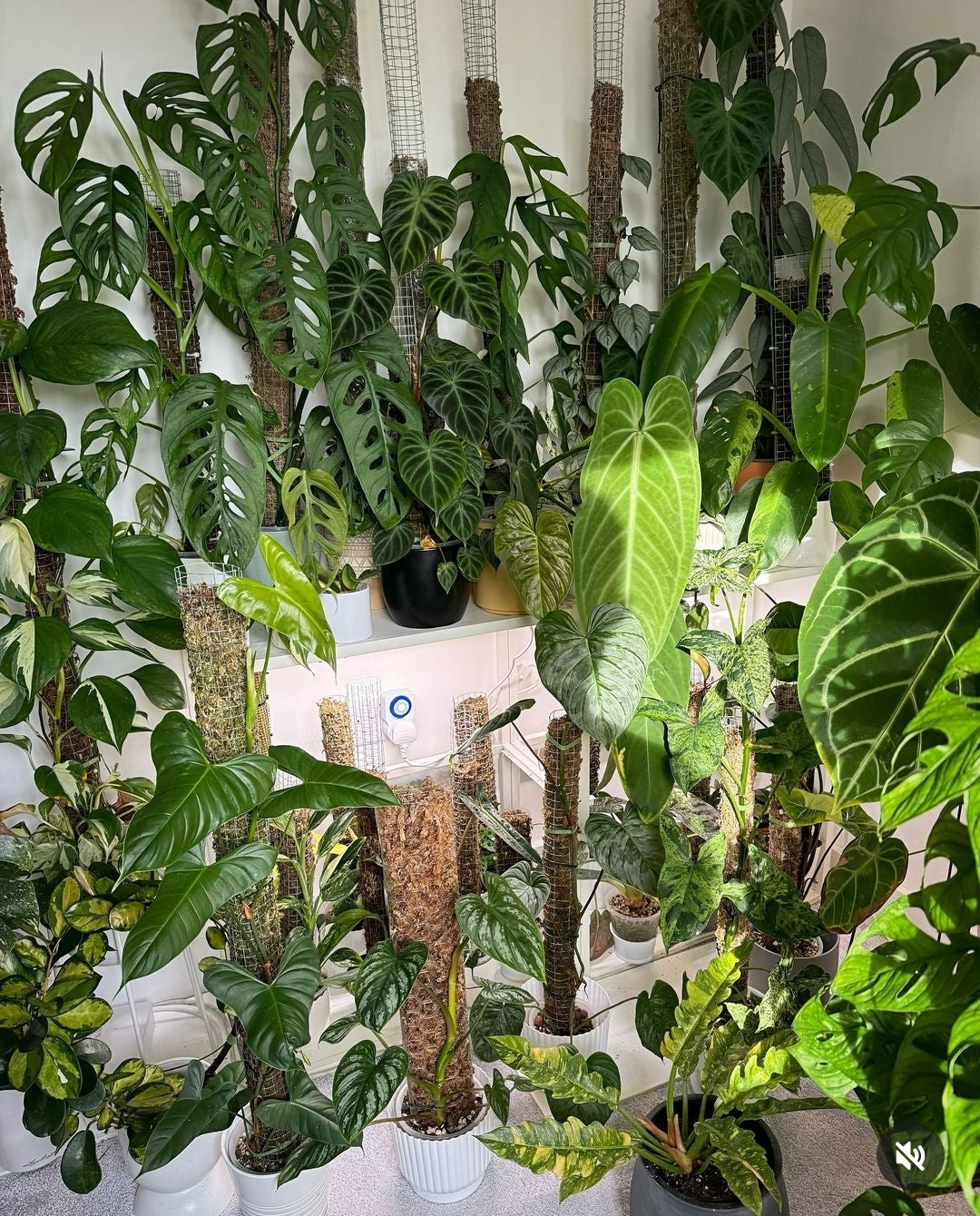Moss poles are an excellent choice for supporting trailing plants, providing not only structural support but also a natural habitat for beneficial microorganisms. This guide delves deeper into the use of moss poles, offering tips and insights for maximizing their benefits and creating a thriving vertical garden.
Step 1: Understanding Moss Poles
- Moss poles are constructed using a core material, such as PVC pipe or bamboo, wrapped in a layer of sphagnum moss.
- The porous nature of moss allows for better moisture retention, promoting root growth and providing a humid environment favored by many plants.
- Moss poles mimic the natural conditions of a plant's native habitat, encouraging healthy growth and reducing stress.
Step 2: Choosing the Right Moss Pole
- Select a moss pole that is appropriate in height and diameter for the size and growth habits of your trailing plant.
- Consider the aesthetic appeal of the moss pole, as it will become an integral part of your plant display.
- Inspect the quality of the moss and ensure it is fresh and free from mold or pests.
Step 3: Preparing the Moss Pole
- Soak the moss pole in water for several hours before use to ensure it is thoroughly hydrated and capable of retaining moisture.
- If desired, add additional organic materials such as coconut coir or orchid bark to the moss to improve aeration and nutrient retention.
- Allow the moss pole to drain excess water before installing it to prevent soggy soil conditions.
Step 4: Installing the Moss Pole
- Position the moss pole securely in the center of the plant's container, pressing it firmly into the soil to ensure stability.
- For larger plants or heavy vines, consider using additional support such as stakes or ties to prevent the pole from tipping over.
- Adjust the height of the moss pole to accommodate the current growth of the plant and allow for future expansion.
Step 5: Training the Plant
- Gently guide the trailing vines or tendrils of the plant towards the moss pole, encouraging them to wrap around it naturally.
- Use soft ties or twine to loosely secure the vines to the pole, avoiding any tight bindings that may constrict growth or cause damage.
- Monitor the plant regularly and adjust the positioning of the vines as needed to encourage even coverage and distribution.
Step 6: Maintaining the Moss Pole
- Mist the moss pole regularly to maintain moisture levels and create a humid environment beneficial for plant growth.
- Check the condition of the moss periodically and replace any dry or deteriorating areas to ensure optimal performance.
- Prune any excess growth or dead foliage from the plant to maintain a tidy appearance and prevent overcrowding on the moss pole.
Step 7: Enjoying the Benefits
- As the plant grows, it will naturally cling to the moss pole, creating a striking vertical display of lush foliage.
- Observe the health and vitality of your plant as it thrives in its new environment, benefiting from the supportive structure and nutrient-rich moss.
- Share your success with others and inspire them to incorporate moss poles into their own plant care routines, enhancing both the beauty and well-being of their trailing plants.
Conclusion:
Moss poles offer a unique and effective solution for supporting trailing plants, promoting healthy growth and enhancing visual appeal. By following these steps and providing proper care and maintenance, you can create a stunning vertical garden that will be the envy of all who see it. So embrace the natural beauty of moss poles and watch your plants climb to new heights!




